The darker side of life has always fascinated Ruth Norbury. Ruth was already a successful artist with customers queuing up to commission her embroideries of British birds. However, something was missing. She wanted to make work that expressed her passions and interests.
But Ruth had never seen anyone embroidering the kind of subjects that intrigued her. It would mean a complete change of direction, as well as experimenting with an array of new textile techniques in order to create the gripping images she pictured in her mind’s eye.
So she asked herself the question, what do I love? And the answers opened the door to a whole new way of working, and an entirely new audience, who are in love with Ruth’s interpretation of Gothic Decay. Now she even shares her techniques and teaches workshops, thanks to taking that first step to be more true to herself.
Her story is one of determination, as well as love for the simple art of hand embroidery. Her journey wasn’t always easy but her courage and honesty is inspiring to anyone looking to express more of themselves in their stitching.
Making a change
Can you share a little about your practice?
Ruth Norbury: I produce unique pieces of embroidery that are quite dark, often based on themes of loneliness and with a slight post-apocalyptic feel. I used to hand embroider British birds but needed to make things that spoke more to me so, one day, I made a piece that was based on an abandoned building, just for fun.
Initially, I was scared what people who liked my old work would think, but I posted it online anyway and it proved very popular. I think these pieces seem to be quite different to other embroidery that I’ve seen, and people either love or hate them, but at least they have a strong opinion one way or the other. They are not bland!
I started this new style around 2018. I still do the occasional bird commission but I’m no longer known as ‘the birdie lady’ by my framer!
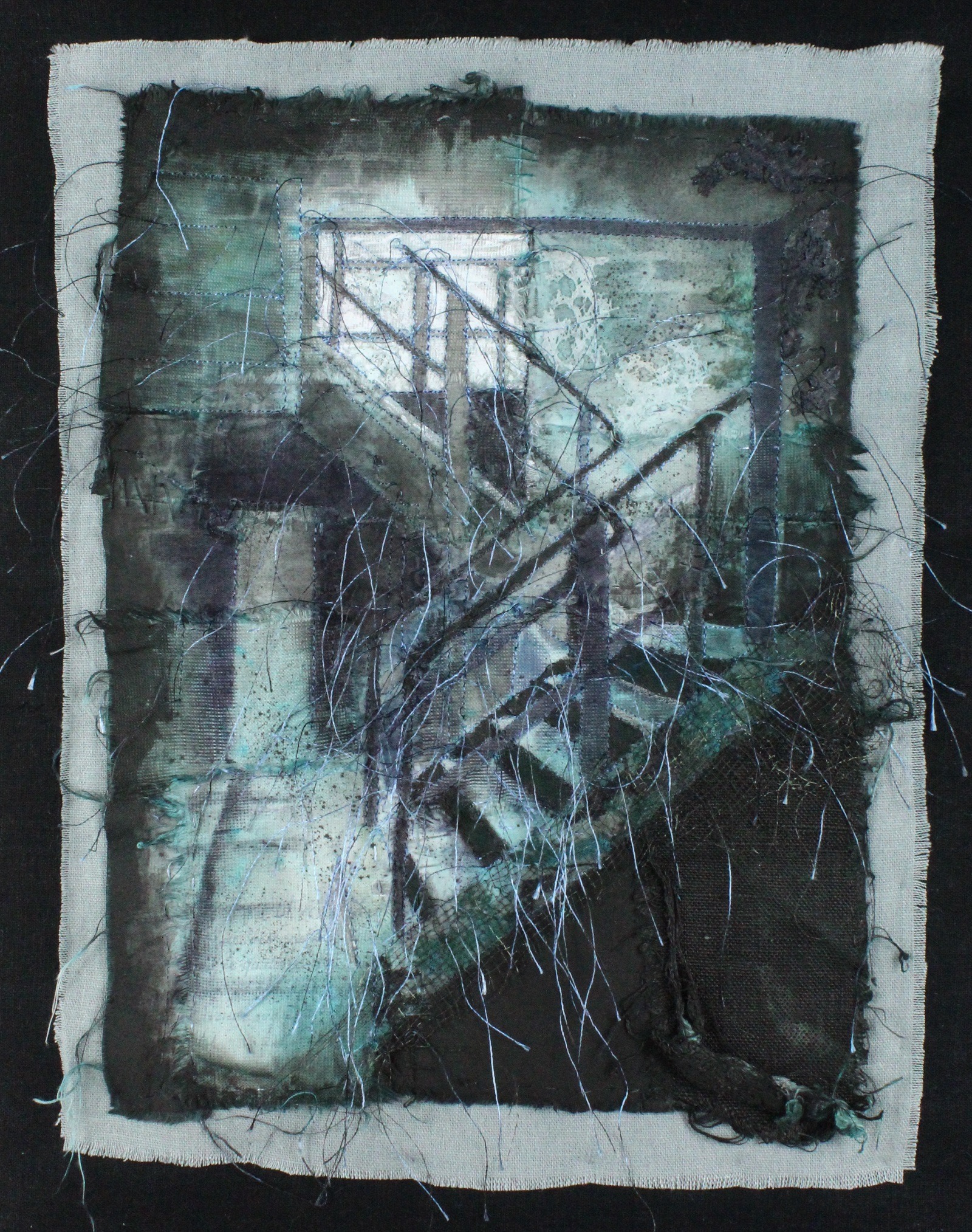
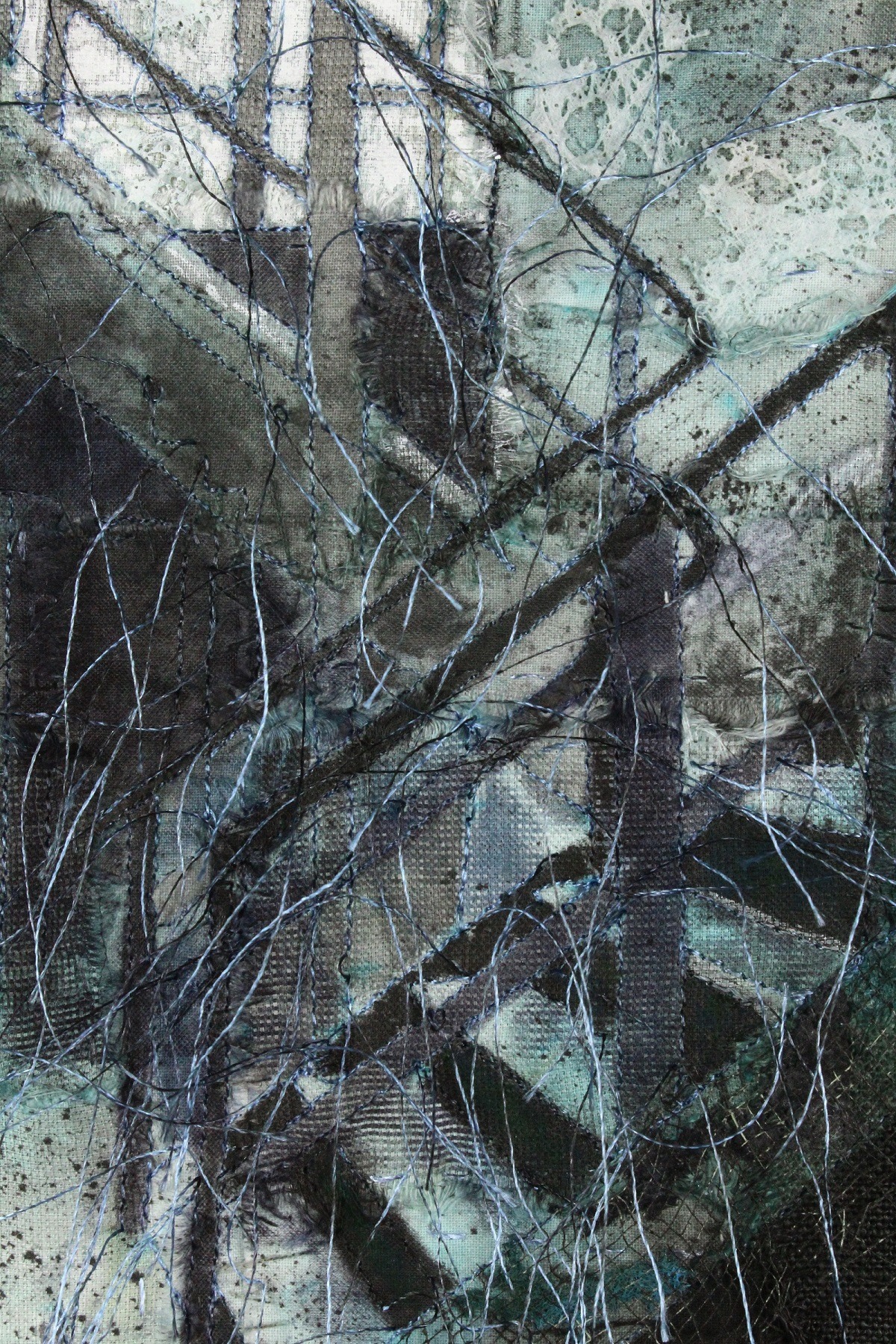
How did your fascination with the darker side of life transform into your Gothic Decay journey?
I have no idea why I like dark things. I was obsessed as a child with Franklin’s lost expedition to the Arctic, and I had a book with photographs of some of the sailors who were lost. It’s not a weird obsession, just a fascination. I wanted to be a pathologist for a long time, probably because of those expedition photographs, but getting a medical degree before specialising was a long road.
I love TV programmes and books about death and also the workings of the mind. What can seem a tiny thought with one person can take over someone else’s life. How does the thought ‘did I lock the back door’ become, for example, a ritualised checking until they are unable to leave the house?
I have no art background, I hated it in school, so getting the concepts down that I want to use is hard. I keep practising and trying to find out why it scares me so much.
I think I expect perfection even though I haven’t learned to draw. So I need to be nice to myself, take off the pressure and just play, for example, doodling while watching a TV programme, rather than sitting at my desk waiting for both inspiration and perfection to appear like magic.
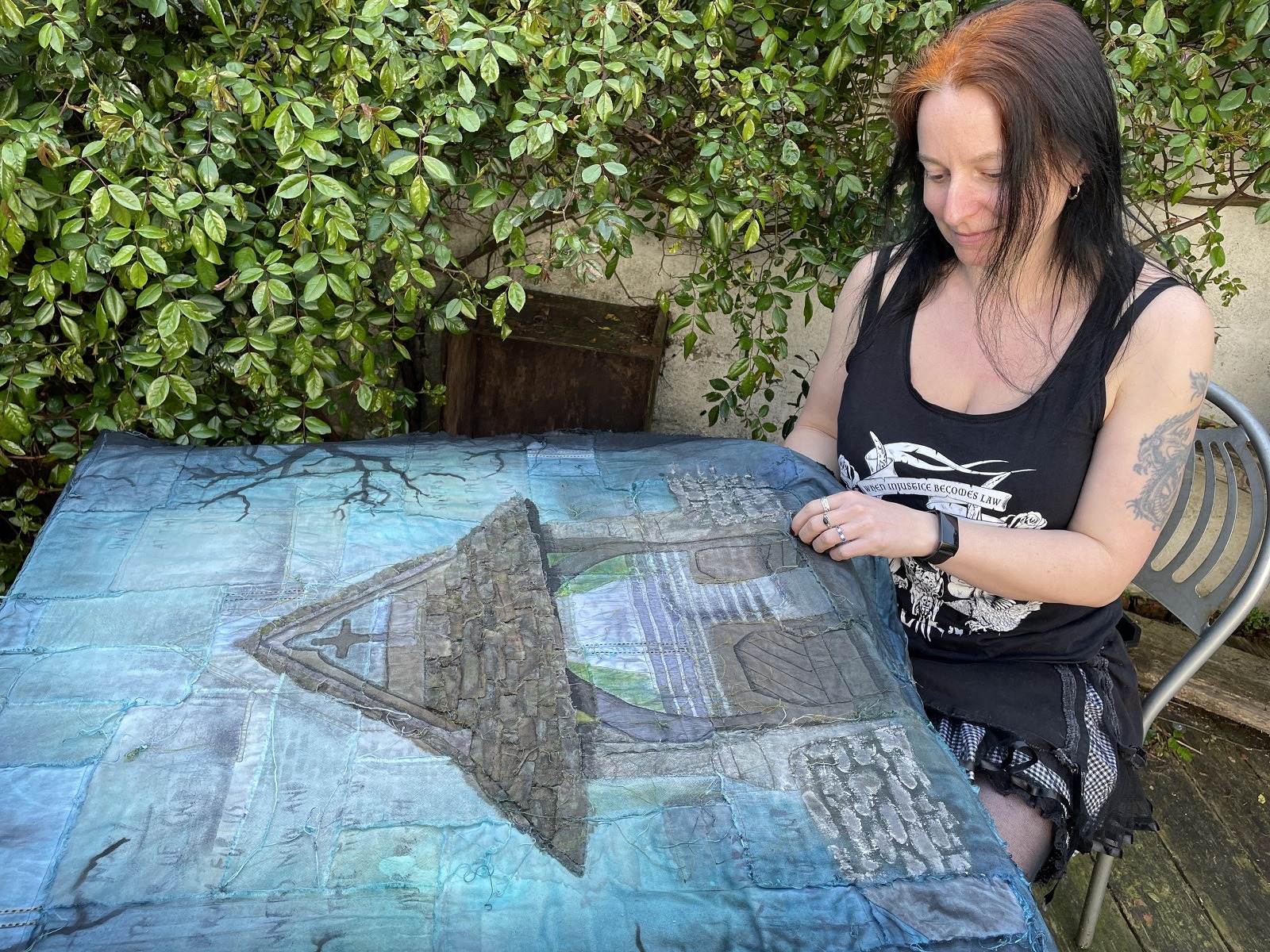
At the moment I’m trying to change the themes in my work again, using some of the darker topics but carefully, with respect, and trying not to sound like an angsty teenager!
I don’t want to shock people but maybe make people think about a subject. It’s more than just embroidering an unpleasant image.
Bumps along the way
I love the way you call it a Gothic Decay journey because it makes it seem much more real. There are ups and downs: work that you hope no one sees, and some you want everyone to see.
The new style of work didn’t just pop out one day. I experimented and had a lot of disasters along the way – the woodburning stove on the boat I lived on concealed a lot of evidence in that department!
I think it’s easy to read about other people and just see the finished pieces that they want you to see. We don’t photograph the failures, or the tears. We shouldn’t assume everyone is blindly striding forth on a journey where each piece is better than the last.
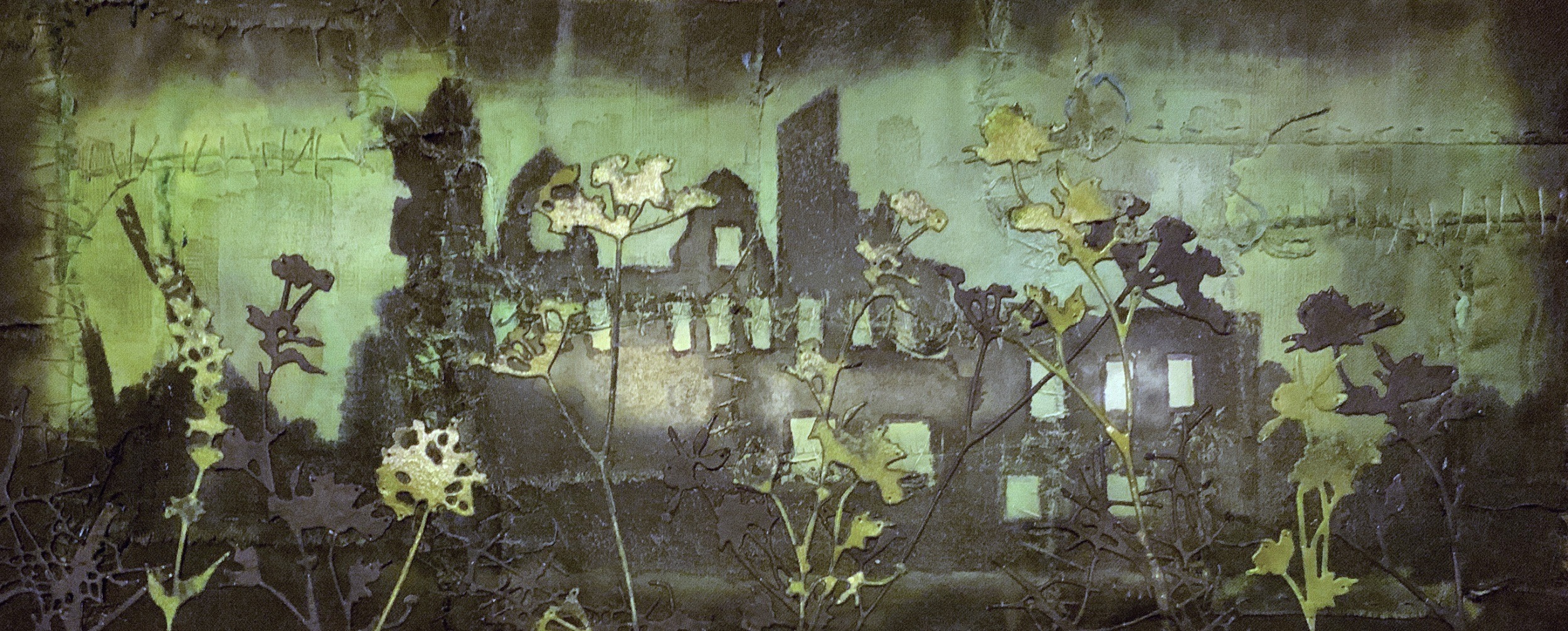
What was your path to becoming a textile artist?
I started with a cross stitch snowflake in primary school, which I managed to do wrong! I just loved it and, because kits were expensive, I used to ask for them for Christmas and birthdays.
After a while, I started filling in designs from stencils and I managed to get full marks for my GCSE Textile practical, as it was a full Jacobean design from a book, all hand stitched. I suppose that embroidery has just been part of me since I was around six.
What has become interesting to me is the realisation that I prefer to look at ‘grungy’ art, so that’s why I have spent so long trying to make my work look grungy. Now, however, I realise that hand embroidery is my favourite, so I have to cram grungy, death-related subjects and embroidery together and make it work.
I think it’s that determination to mash together things that don’t belong that’s driving me at the moment.
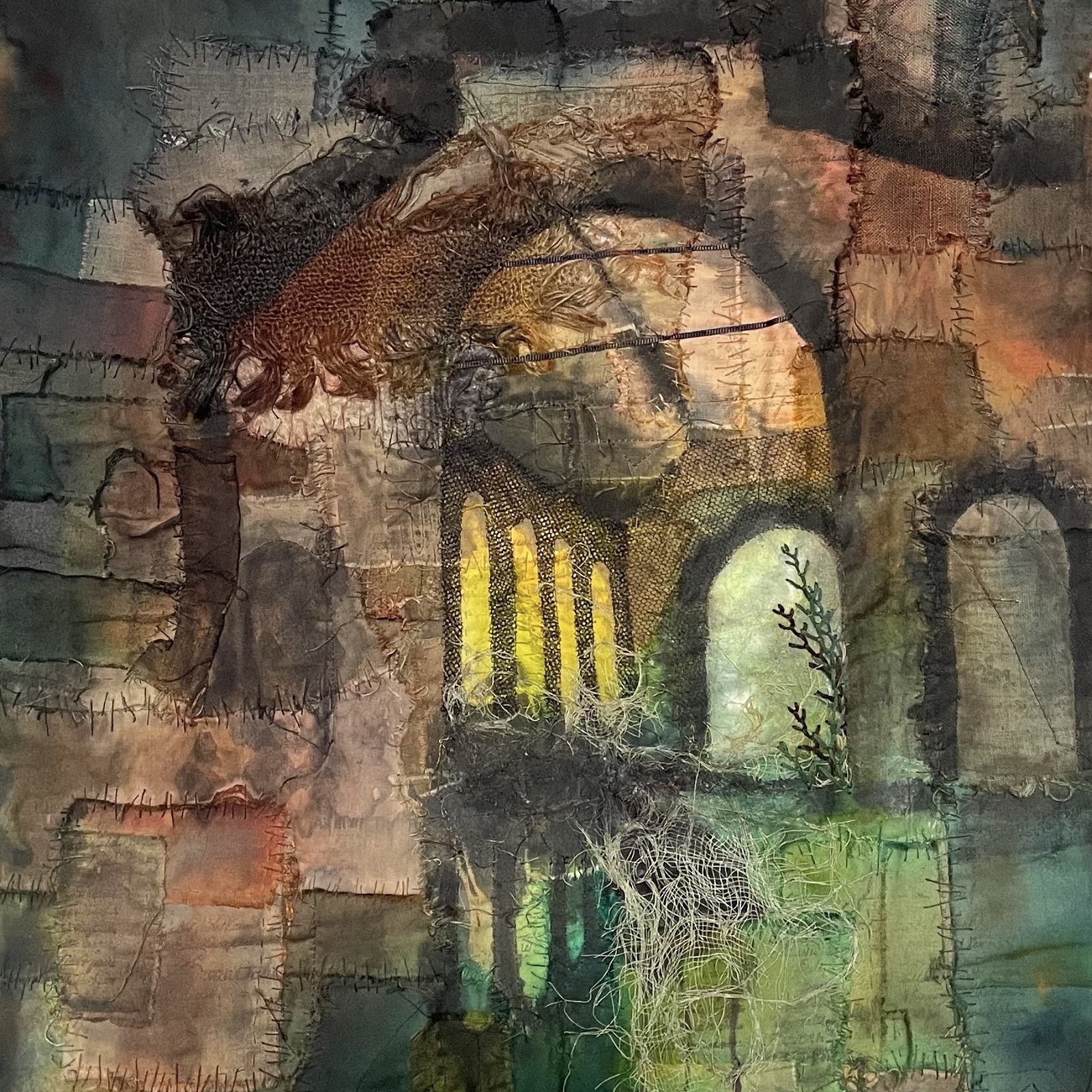
Taking a risk
My decision to become an artist came about because I used to give my embroidery as presents to my boyfriend in school (yes, the same James I’m married to now!). When his mum suggested I could do it as a job I laughed because, to me, artists were either broke or dead (although I forgot that his dad is an artist too). I spoke to a friend after I’d finished university and she said if you don’t try, you will never know… so here we are.
My mum and sister also embroider. I think we inspired each other to some degree but I’m not sure who started it really. We all have very different styles and sometimes we send pictures to each other if we’re stuck. Mum’s work is very colourful, and my sister makes pieces based on moss and lichen.
My mum made all of our clothes as children, and I remember using a tiny sewing machine to stitch paper together whenever I sat in her workroom, so I guess I have always been around fabrics.
Tell us about the materials and techniques you like to use?
The piece I’m currently working on, called Compliance, is very experimental. I’m using Photoshop to design it. I like the grungy, yucky textures that I can create using the computer and love to try to translate these in the best way I can into textiles.
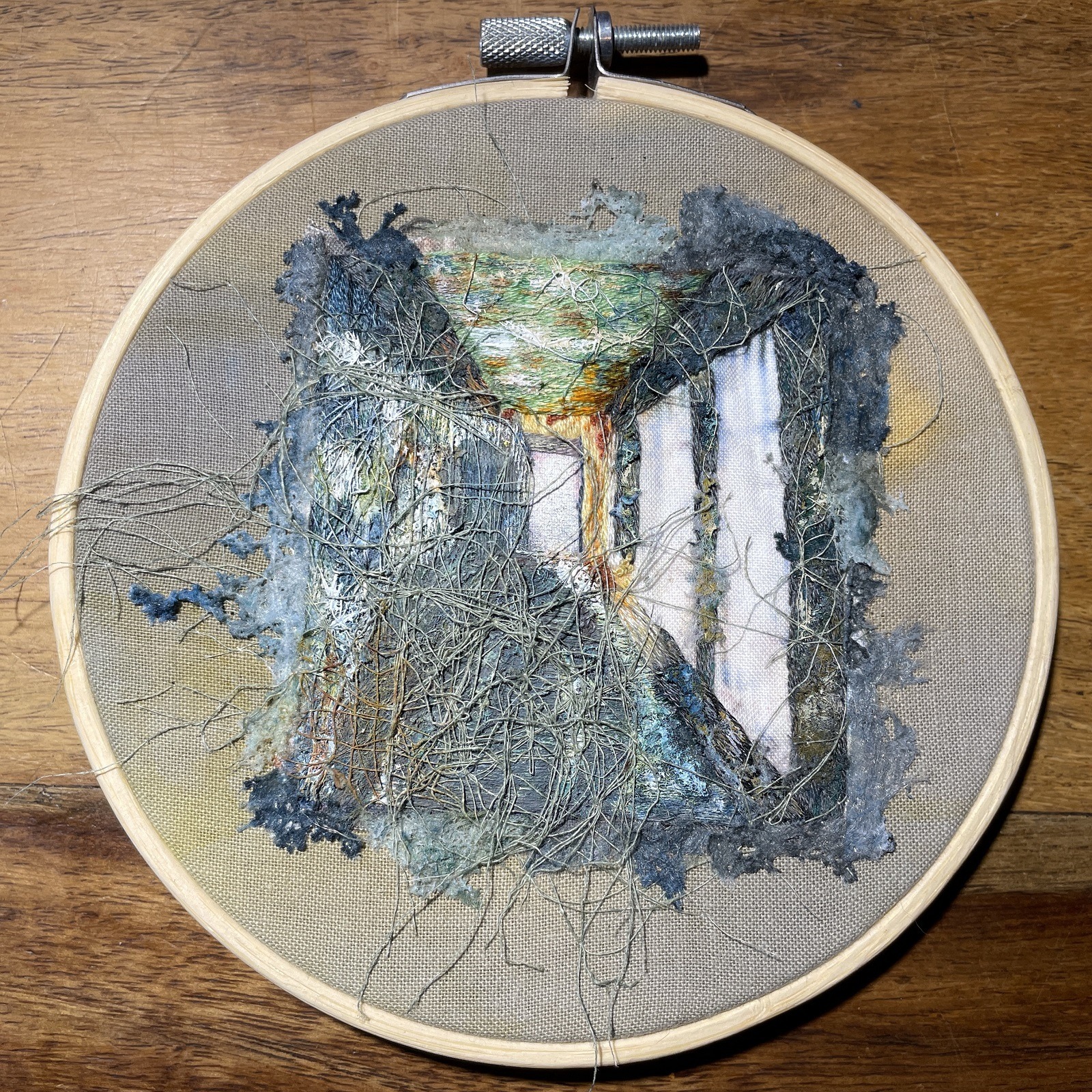
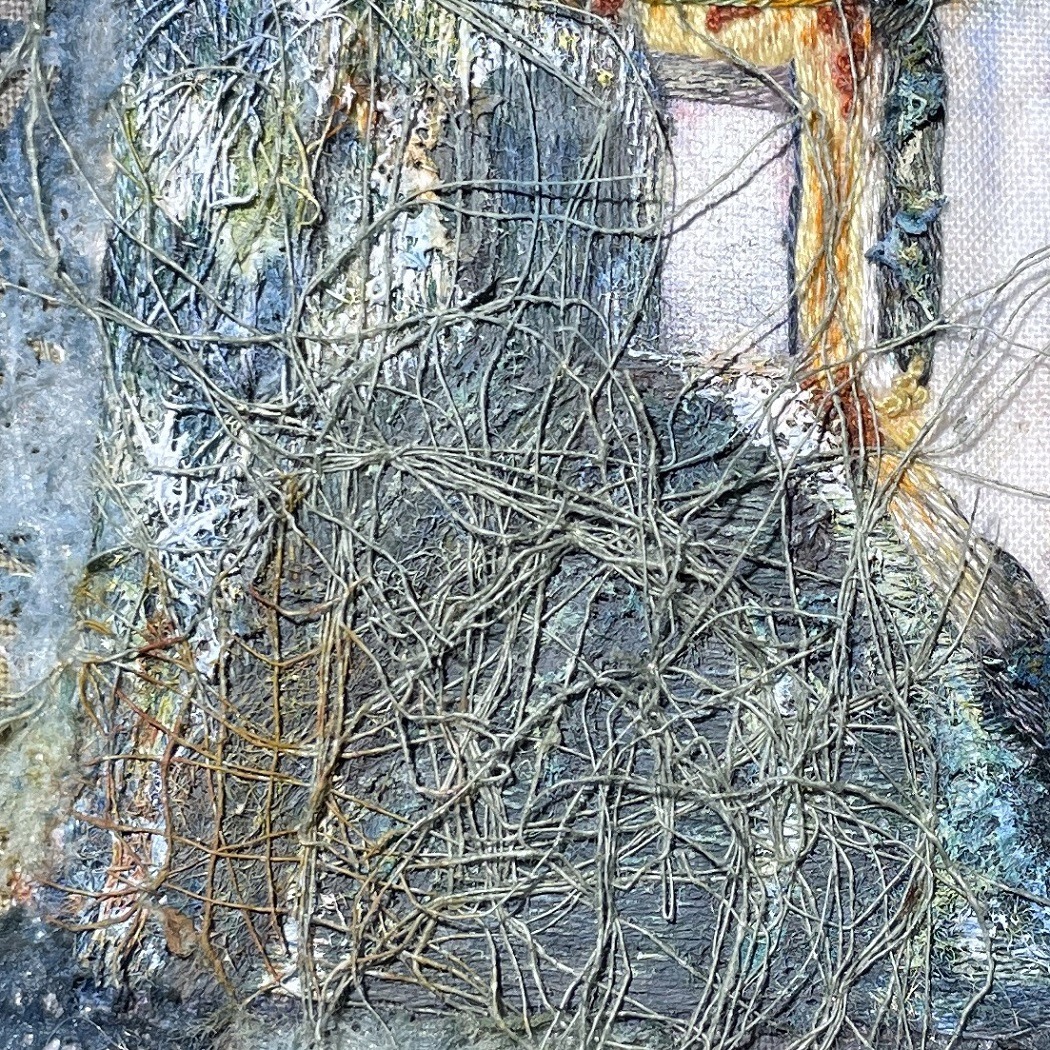
It is all hand embroidered in stem stitch, with the stitches packed really closely together. I’ve then stitched Lutradur over the top, along with inks and paint to try to create the texture I want.
It’s quite a challenge for me to be more ‘scruffy’ with my embroidery. Compliance is quite small as the whole background is hand stitched, even if you won’t be able to see it in the end.
Before this, my work was created from pieced patches of fabrics, with machine embroidery to show outlines, plus inks, paint, hand embroidery, beads… anything that gets across the effect that I want.
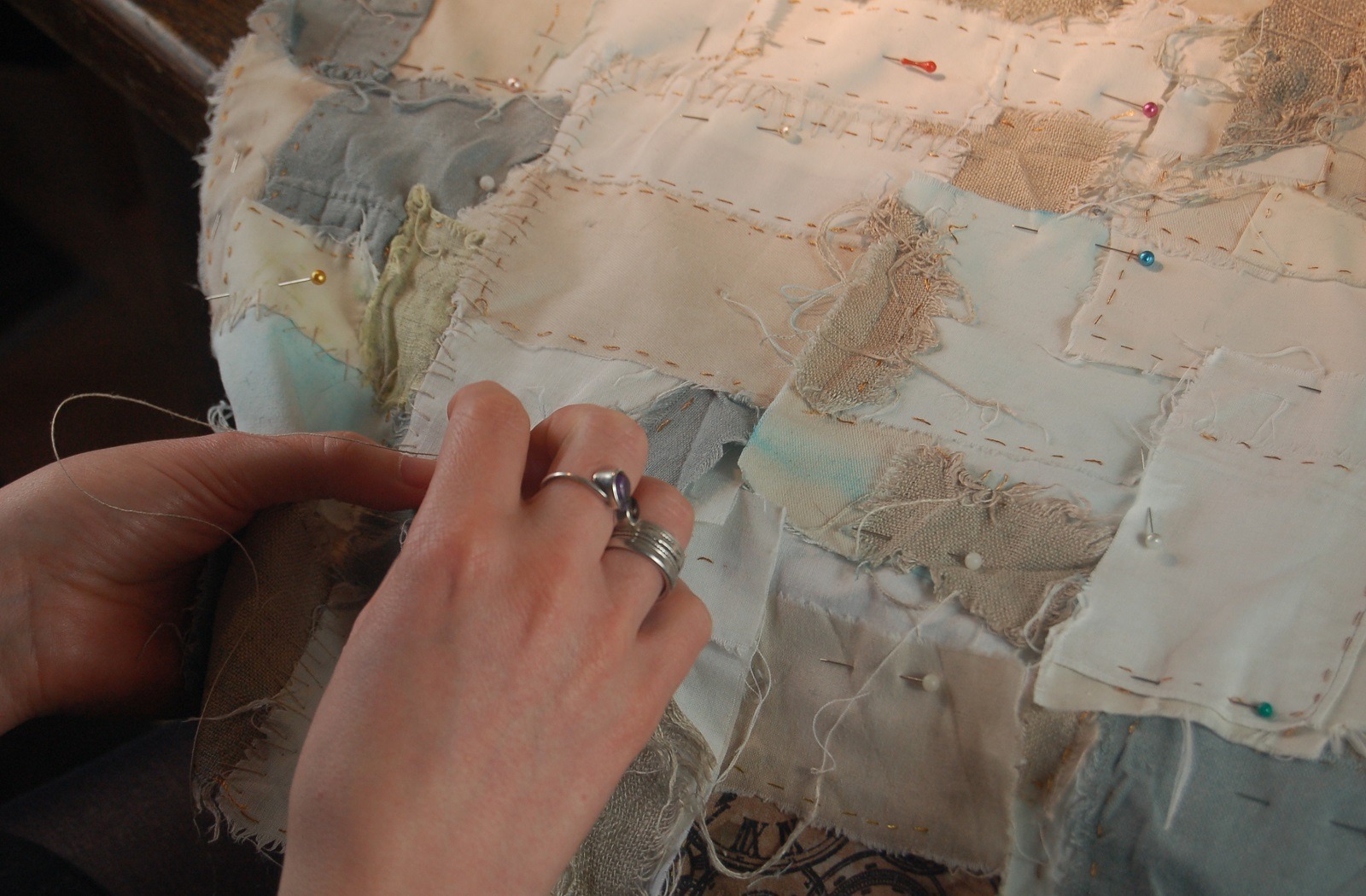
Breaking the rules
I like the slow nature of hand embroidery. You can ponder how you are going to stitch the next bit with no hurry or panic, just settle down and things make sense.
I keep going back to hand embroidery. It has always been my favourite, but I tend to be too neat with it, which is why I add all the textured elements. I suppose I’m trying to take the thing I love to do and shove it into a design it doesn’t belong in, and therefore create something new. Hopefully!
Inspiration often comes from a sentence from a TV programme that I have watched that really resonates with me, or a quote about a subject.
Sometimes it comes from the music I like. I like heavy industrial metal and there’s often really interesting music videos too, with great imagery. My pieces are almost all named after songs.
I try to experiment as much as possible. And try different methods of designing. I don’t like a blank page and a pencil, but charcoal makes me loosen up because I can’t rub it out and it’s completely different to drawing with a sharp point. At first, I thought it was a terrible idea to try something that I was even more inaccurate with, but it actually helped.
How do you source your images?
I don’t come from an art background, so I often use Photoshop to manipulate photographs, but I’m starting to get better at drawing. I suppose Photoshop is a necessity for me as otherwise there would be some terrible perspective and all sorts of issues!
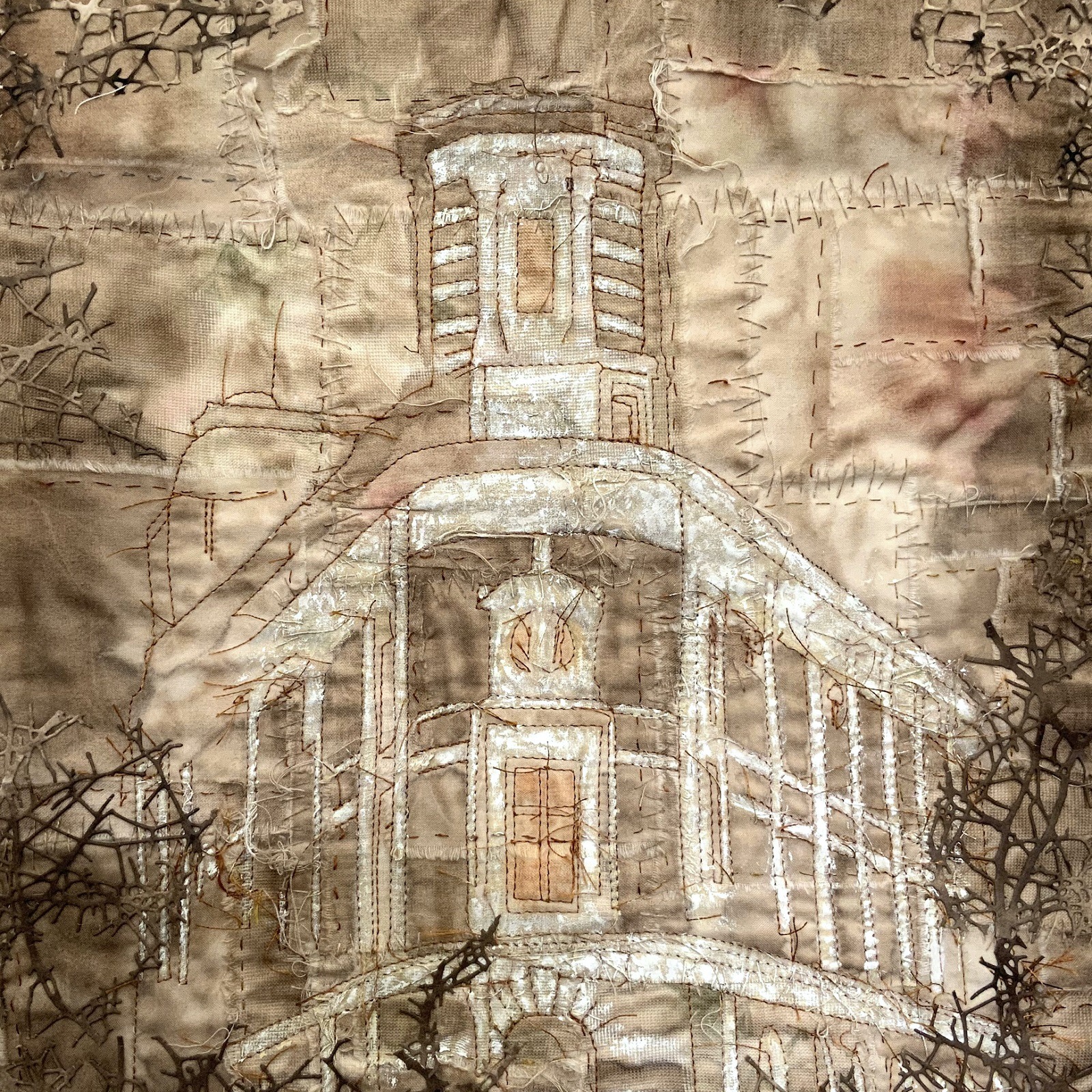
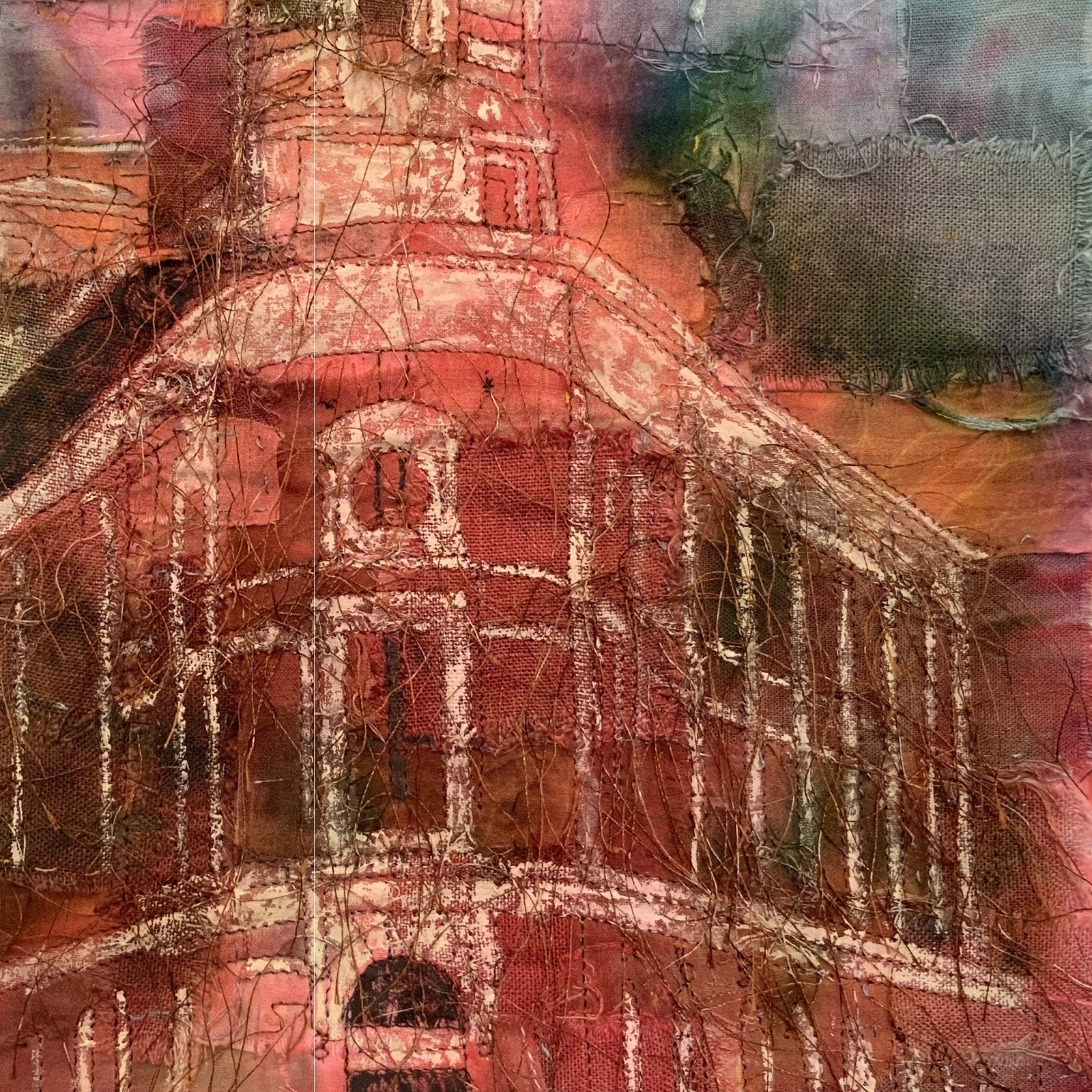
I source images based on things I see. For example, I’ve just finished two pieces of work – What Then Is Time? and Fading Memories – based on an abandoned theatre in Swansea. It’s a lovely building with a great history and it has been sad to watch parts of it fall off. Thankfully now it is being looked after.
Can you tell us a little about your life at the moment?
I am a full-time artist. James and I have always worked for ourselves (except when I had a job for six months). We had always been a bit stretched, but James recently wrote a book and life has taken a dramatic jump financially.
I only mention this because it has allowed me to work on what I love and not make things in a similar style to previous work. I suppose that it has given me time to fail and make mistakes, and that has been very liberating.
Sharing the love
I thought teaching would simply take some financial pressure off selling work, but I actually love to see how other people work with the information I give them. A room full of people with the same fabrics and threads will produce wildly different things.
I also like to work in new styles every few years so I can share the ‘special sauce’ without feeling like I am giving away secrets.
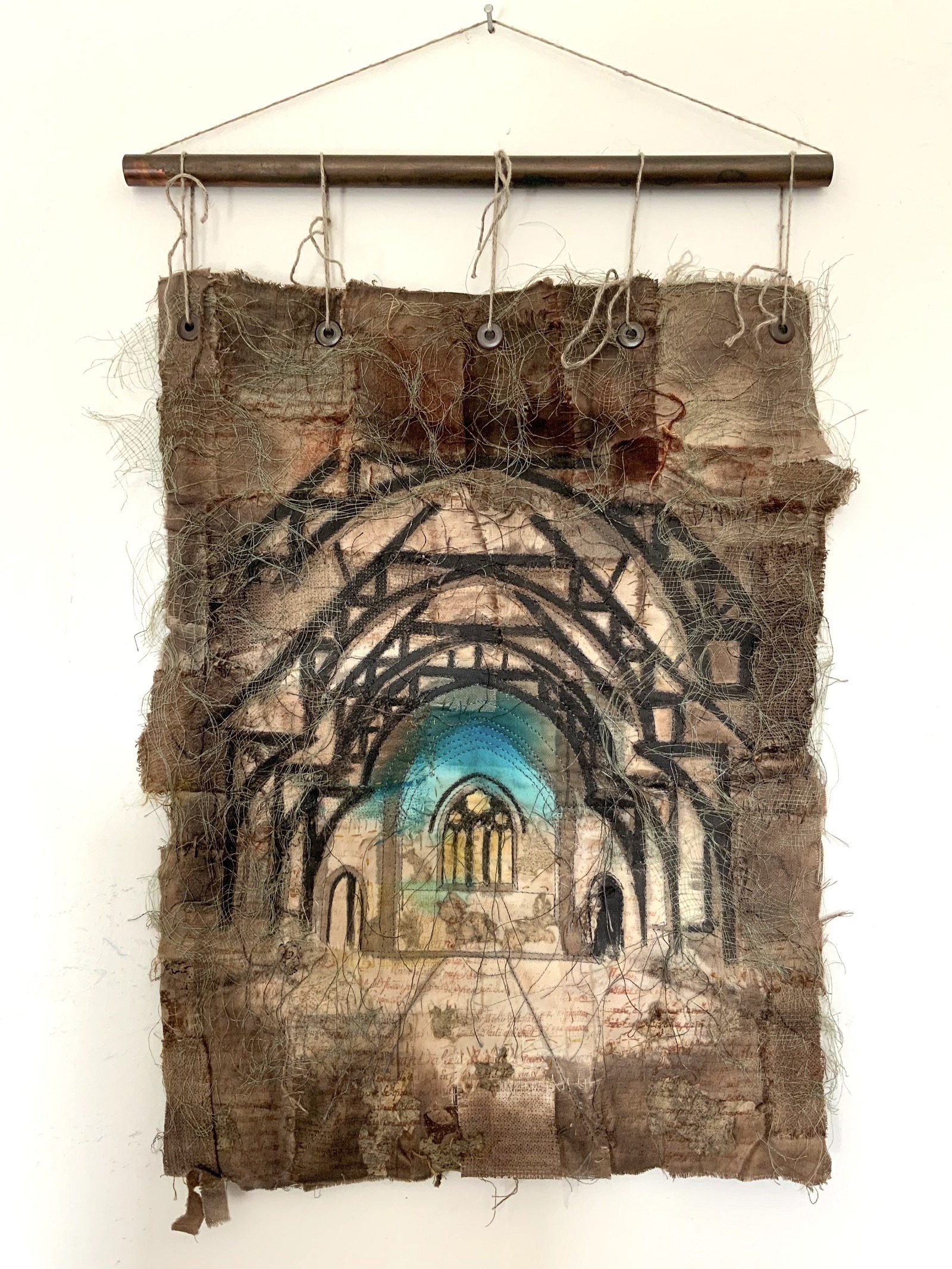
What do you love about being a textile artist?
I love sitting with a small hoop, grabbing the perfect colour thread and making things.
I love working from home, sitting with a desk full of cats and having sudden inspiration as to how to complete a troublesome section of an embroidery. For instance, realising that teabags make great leaves and wanting other people to know as well, not out of arrogance, but just wanting to share my tips so other people can use them too.
Also, I get a thrill from finding just the right fabric, beads or threads in a charity shop, like a hunter-gatherer in the modern age. Upcycling is very important to me. I try not to buy anything new for my work and all the fabrics are found in charity shops and from old clothes.
Have there been challenges along the way?
There are so many… too many to count. My lack of confidence is a huge problem. One day I’ll think I can take over the world and everyone must see my work, then the next I’ll feel like I have no idea what I’m doing and want to hide. I guess I am learning to ride it out when my confidence is low and do things that I know that I can do.
Creating work that I like, using the tool of hand embroidery, which appears highly inappropriate at first, has been a challenge but it all seems to come down to experimentation.
Maybe one section of an embroidery works well, so I’ll try it again in the next piece. Maybe another part didn’t go so well, so I ask myself how can I make sure I don’t do that again?
Standing in front of a room full of people to teach is hard, but I tell myself that I really do know the subject.
I feel we really understand you as an artist in everything you do. How did you arrive at that point creatively?
The artist Roxanne Hawksley (1931-2021) listened to music to help get the emotions flowing while making her pieces. It often makes me smile when I have a small hoop full of embroidery and loud industrial metal on the stereo – it isn’t the traditional mental image of an embroiderer!
James (my husband) said I should use the things that ‘make me, me’. I love dark art, decay, gothic fashion, hand embroidery, and creepy old asylum images. I say to people to make a list of things you like and see if you can combine them to make ‘your work, you’.
Perhaps this is the ultimate personal challenge, to make work that truly reflects who you are. And it’s a risk that we are very grateful that Ruth Norbury made.
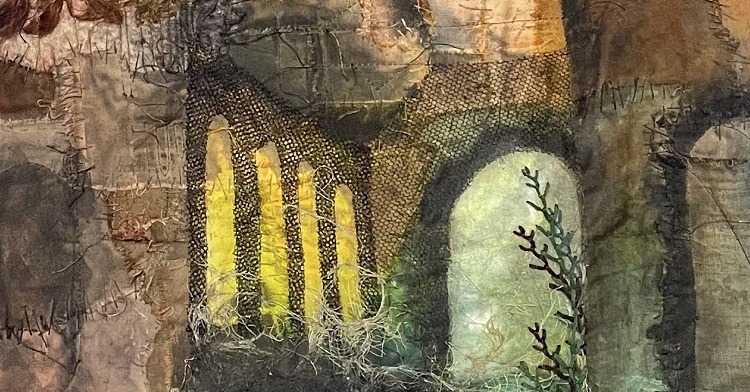

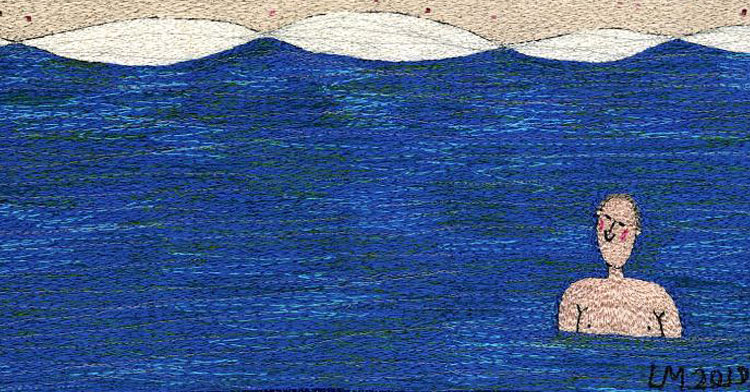
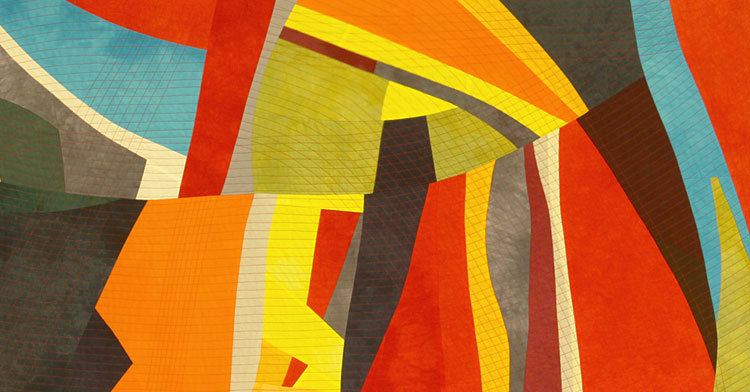
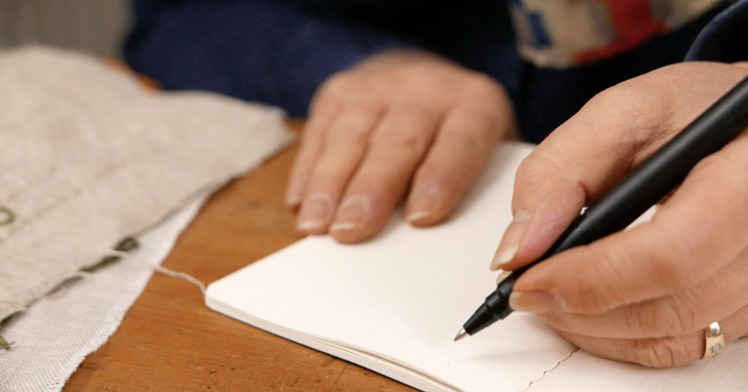
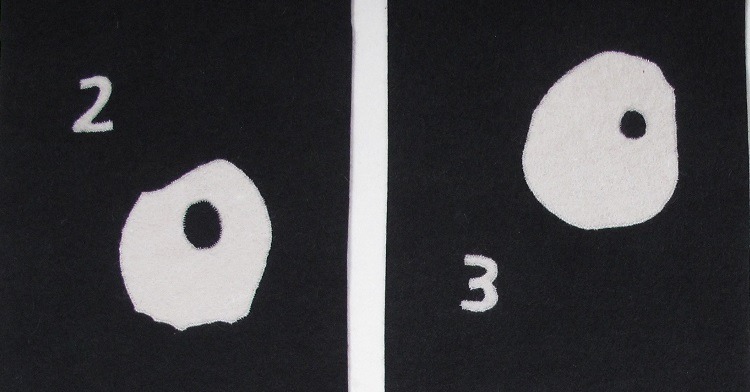
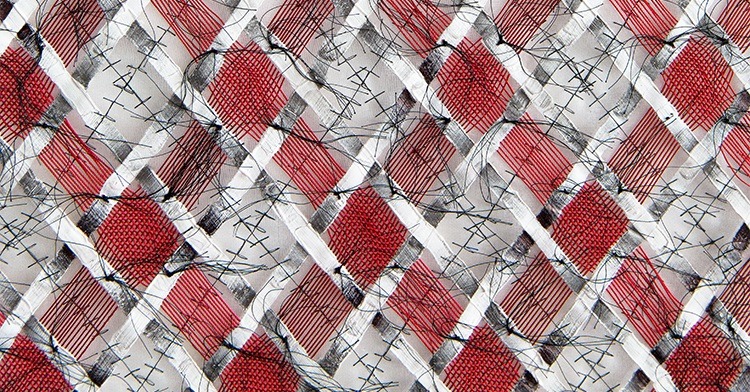
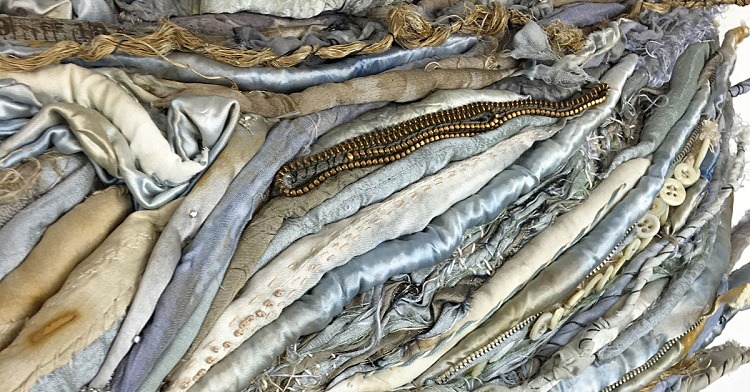
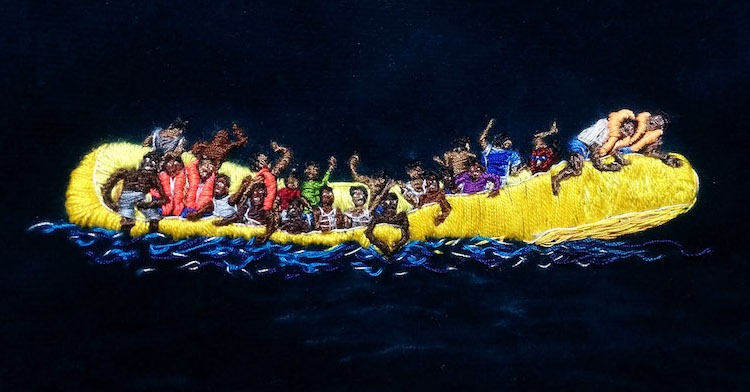
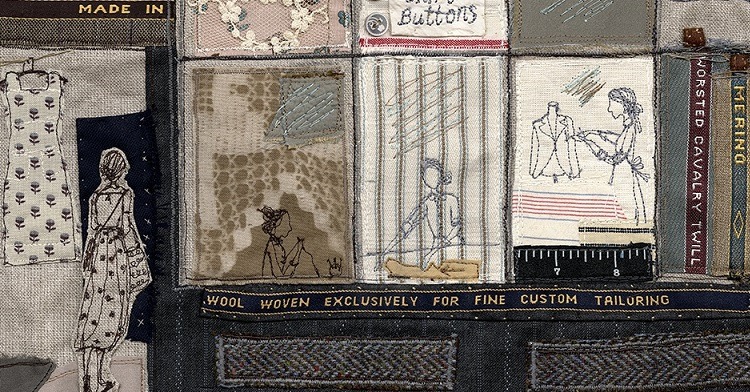
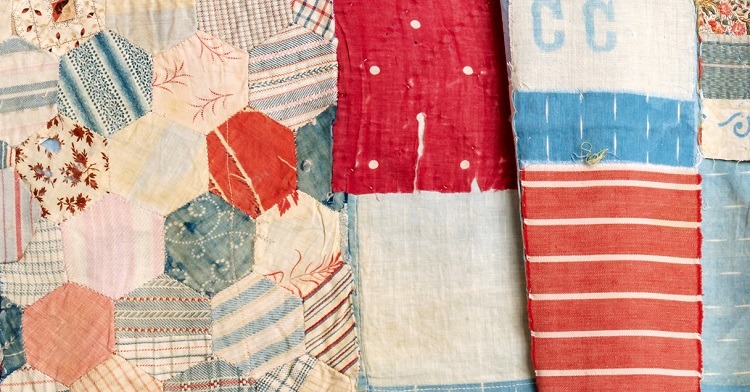
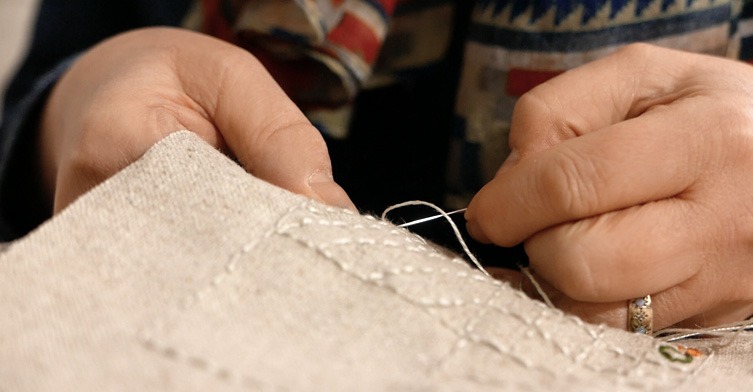
2 comments
Ruth Norbury
Textile art is such a huge subject isn’t it! Your work sounds very creative. Xxx
Karin Norunn Björnöy
It is very interesting to see all the different techniques to textile art. I myself, are trying out, by using leftover from my handwoven fabrics, arrange them as image of a landscape, and then doing handstiching on top. Sometimes I use some small pieces of silk to get an effect I would like.